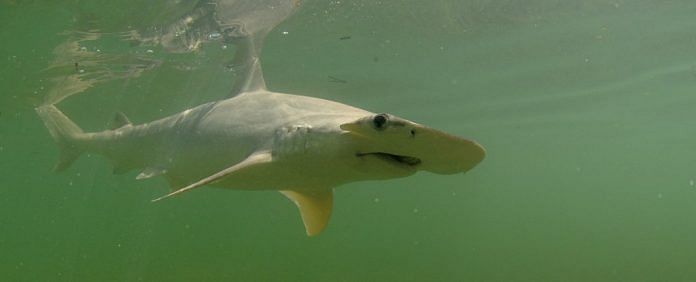Reporting science has become more mainstream in media around the world and India is also catching up quickly. But latest scientific research is published in a variety of journals, making it hard for readers to keep track. What’s harder is understanding the crux of a scientific finding with the relevant context and without misinterpretation. We at ThePrint focus on covering science news in India, but want our readers to be updated on the latest global findings as well.
ScientiFix, our weekly feature, will offer you a summary of the top global science stories of the week, with links to the best sources to read them. It’s your fix to stay on top of the latest in science.
World’s first omnivorous shark species discovered
Think of sharks and you imagine terrifying killers that smell blood a hundred kilometres away and zero in for the kill. Turns out that impression, which had been near-accurate in all of history, is up for revision. One of the most common sharks in the world, called the bonnethead shark, is actually an omnivore with plants making up over 60% of its daily diet. In fact, researchers who studied the bonnethead shark eating seagrass found that they ate as much plants as a young sea turtle. The Guardian breaks down how they went about ascertaining this discovery. A spate of headlines seem to be calling this the world’s first ‘vegetarian’ shark. Needless to say — no, omnivores are not vegetarian.
Nobel committee-overlooked Jocelyn Bell Burnell receives $3 mn prize, to donate it
Back in 1967, Jocelyn Bell was a graduate student at University of Cambridge, and discovered periodic pulses in her radio telescope data. She and her supervisor nicknamed it ‘Little Green Man-1’ but ultimately realised they had discovered neutron stars, the extremely dense remnants of supernovae that shot out radio bursts. Only her supervisor won the Nobel for the discovery. Jocelyn has now received the Breakthrough Prize totalling $3 million and plans to donate it to set up a scholarship fund to help women in sciences. Here’s a short report on Space.com and a longer piece on Ars Technica on her life and accomplishments.
Lunar swirls created because of magnetism on moon’s surface caused by lava tubes below
The lunar environment is unnatural to us humans because of one main reason: The lack of atmosphere. This causes reactions of a nature we don’t even think of. Rocks and soil on the moon, for example, get magnetised at high temperatures when sunlight falls on them. This doesn’t happen on Earth because the atmospheric oxygen binds with the iron in the soil. But it doesn’t stop there. Turns out ‘lunar swirls’, those pretty, wispy cloud-like patterns on the moon, were formed due to surface magnetism billions of years ago over underground lava tubes. These tubes are hollow tunnels through which lava once flowed. Read more on this on Phys.org.
Burkina Faso researchers to start fighting malaria by genetically engineering mosquitoes
Releasing mosquitoes that can be genetically modified to transmit sterility and thus bring down mosquito population has been in the works for a while. It has been attempted in parts of Africa, Brazil, and China before, and has even been implemented briefly in New Delhi in the 80s, without much success. But with each trial comes newer data and better lessons. The government of Burkina Faso has given permission for another trial, set to take place soon. Mali and Uganda are expected to follow suit. Stat News has the lowdown.
Brazil museum fire causes loss of thousands of invaluable scientific, historic artefacts
Last week, Brazil’s National Museum caught fire and burned for several hours with no containment and almost nothing left to show. Both experts and public have denounced the Brazilian government and authorities for the waiting-to-happen disaster — it had never been renovated in its 200-year history, had had infestations, and was shockingly short on funds. Latin America’s biggest natural history museum housed nearly 20 million specimens, several valuable fossils, and invaluable anthropological artefacts. So far, what seems to have survived the fire is a giant meteorite. The Atlantic, the New York Times, and the LA Times have detailed reports on just how much has been lost in this neglectful and preventable accident.






